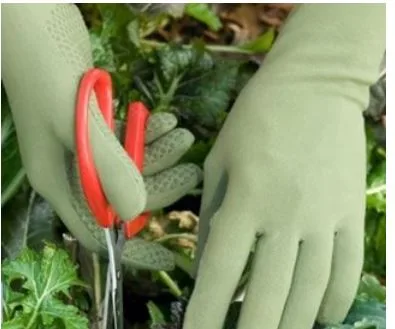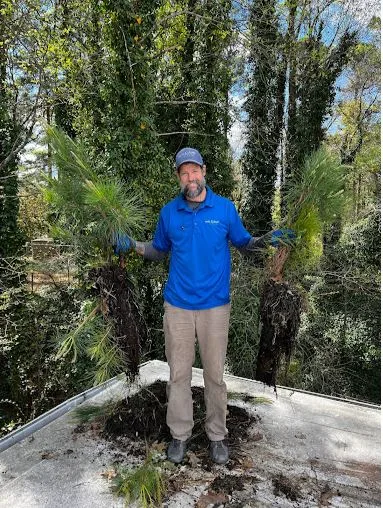How a Cultipacker Can Enhance Your Gardening Efficiency
Imagine turning your garden into a place of effortless growth and flourishing plants. One tool that can help achieve this is a cultipacker. A cultipacker is a gardening and agricultural tool that plays a crucial role in soil preparation. By compressing and flattening the soil, it creates a firm seedbed. This improves the chances of seeds making proper contact with the soil, a critical factor for healthy plant growth. The cultipacker’s ability to enhance soil structure makes it a valuable asset for anyone looking to improve their gardening efficiency.
Benefits of Using a Cultipacker
Implementing a cultipacker in your gardening routine offers numerous advantages:
- Improved Seed-to-Soil Contact: A cultipacker compresses the soil, ensuring seeds are nestled snugly within their growing medium. This promotes better germination rates.
- Enhanced Soil Structure: The tool helps break up clumps and evens out the soil surface, creating an ideal environment for seeds to sprout.
- Water Retention: Compacted soil holds moisture more effectively, reducing the frequency of watering and helping plants withstand dry spells.
- Weed Control: Firm soil surfaces make it harder for weeds to establish a presence, minimizing competition for resources.
For a more detailed examination of how soil compaction can benefit agricultural practices, check out this detailed article.
By integrating a cultipacker into your gardening, you capitalize on a tool designed to increase efficiency and improve crop success.
How a Cultipacker Works
A cultipacker is a vital tool for gardeners who want to enhance soil preparation. Understanding its function helps you appreciate its role:
- Structure: A cultipacker consists of a series of heavy wheels or rollers mounted on an axle. These rollers are designed to compact the soil without compressing it too much, which improves seedbed preparation.
- Operational Mechanism:
- Crushing Soil Clods: As you roll the cultipacker over the field, its weight crushes soil clods, breaking larger chunks of earth into smaller, finer particles. This creates a smooth, even surface ideal for seed planting.
- Firming the Seedbed: The cultipacker presses the soil down, creating a firm seedbed. This firm surface enhances seed-to-soil contact, which is crucial for seed germination.
- Benefits Without Overlap:
- By firming the surface, the cultipacker promotes better soil moisture retention while preventing soil erosion. These operational steps are distinct from the benefits but facilitate those advantages.
- By firming the surface, the cultipacker promotes better soil moisture retention while preventing soil erosion. These operational steps are distinct from the benefits but facilitate those advantages.
Choosing the Right Cultipacker for Your Needs
Selecting the perfect cultipacker involves considering factors like garden size and soil type. Here’s a simple guide to help you choose wisely:
- Garden Size:
- Small Gardens: For smaller areas, a manual or smaller roller packer might be sufficient.
- Large Fields: Larger spaces benefit from a pull behind cultipacker that can attach to tractors, providing greater efficiency.
- Soil Type:
- Sandy or Loose Soil: A heavier cultipacker may be needed to ensure proper compaction.
- Clay or Dense Soil: A lighter model may suffice to avoid over-compacting the soil.
- Types of Cultipackers:
- Cultipacker Seeder: Combine cultipacking with seeding operations, saving time and effort.
- Pull Behind Cultipacker: Ideal for those who can attach it to a vehicle for ease of use across larger areas.
Explore the options available over at Packer Maxx.
Proper Usage and Maintenance
Using a cultipacker effectively in your garden can make a big difference in your gardening success. But to get the most out of this tool, it’s important to know how to use it properly and maintain it well. Let’s go through some practical tips:
Effective Usage
- Seedbed Preparation: Use the cultipacker to firm up your seedbed after seeding. This helps improve seed-to-soil contact.
- Timing: The best time to use a cultipacker is after sowing seeds but before watering. This ensures optimum moisture retention.
- Soil Conditions: Avoid using the cultipacker on extremely wet or dry soil, as the results may not be optimal.
Maintenance Tips
- Clean After Each Use: Remove soil and debris using a brush or hose, ensuring that no mud cakes on the tool.
- Inspect Regularly: Look out for worn-out parts or any signs of rust. Lubricate moving parts to ensure smooth operation.
- Storage: Store in a dry, covered area to prevent weather-related damage.
Comparing Cultipacker Variants
Knowing the differences between various cultipacker models can help you choose the right one for your needs. Here’s a closer look at the distinctions:
Cultipacker vs. Culipacker vs. Cultapacker
- Cultipacker: The most common term used for this type of garden tool, ideal for general seedbed preparation.
- Culipacker: Sometimes used interchangeably with cultipacker but may refer to specific design variations.
- Cultapacker: Often denotes regional naming differences or slight design tweaks.
Design and Application Differences
- Roller Packer: Features heavy rollers for compacting soil, primarily used in larger fields.
- Pull Behind Cultipacker: Designed to be attached to tractors, making it suitable for extensive areas.
For visuals or diagrams explaining these differences, you may find helpful resources online. By understanding these variants, you’ll be better equipped to select the right tool for your gardening projects.
Enhancing Seedbed Preparation with a Cultipacker Seeder
A cultipacker seeder is a handy tool that combines the tasks of cultipacking and seeding in one efficient process. Here’s how it enhances seedbed preparation:
- Streamlined Process: The cultipacker seeder saves time by combining two steps — preparing the soil and planting seeds. This dual function means you can prepare your seedbed and sow seeds simultaneously.
- Improved Seed-to-Soil Contact: By pressing the seeds firmly into the ground, the cultipacker seeder ensures better seed-to-soil contact. This process helps in keeping the seeds in place and enhances germination rates.
- Even Seed Distribution: The tool helps to spread seeds evenly across the entire seedbed. This uniformity is crucial for consistent plant growth and a more bountiful harvest.
- Efficient Use of Resources: By integrating two steps, the cultipacker seeder can reduce labor costs and time, leading to more efficient gardening practices.
Whether you are a novice gardener or an experienced farmer, a cultipacker seeder is a valuable addition to your gardening tools. For those who want to understand more about the workings and benefits of this tool, you can explore resources like this Garden Tool Guide.





